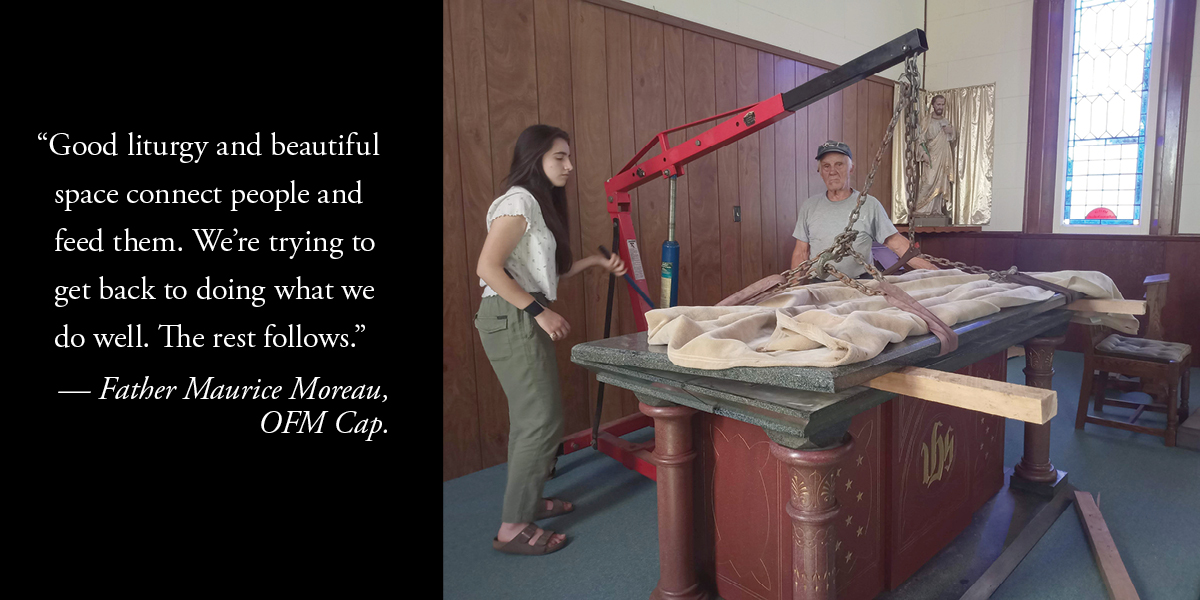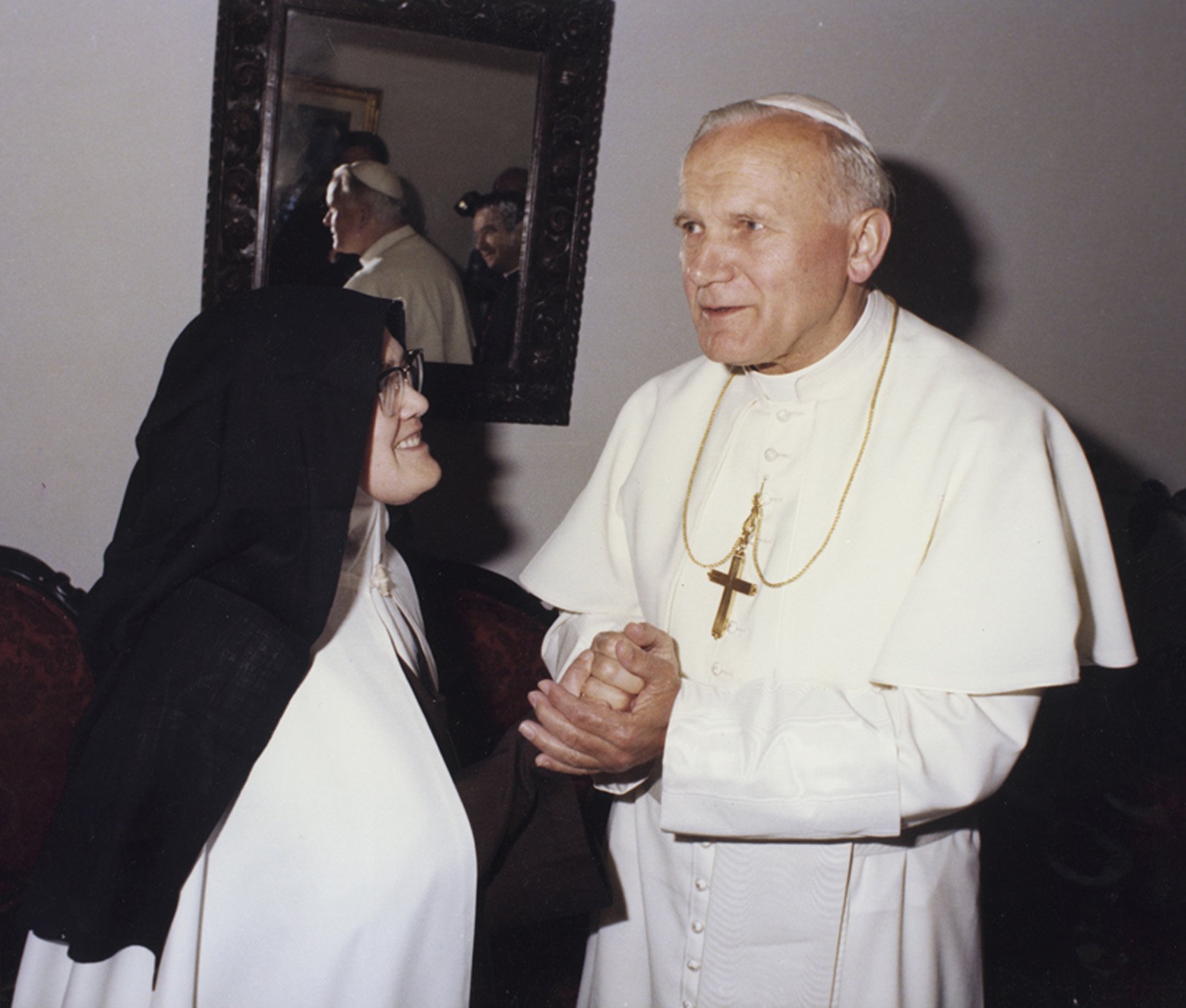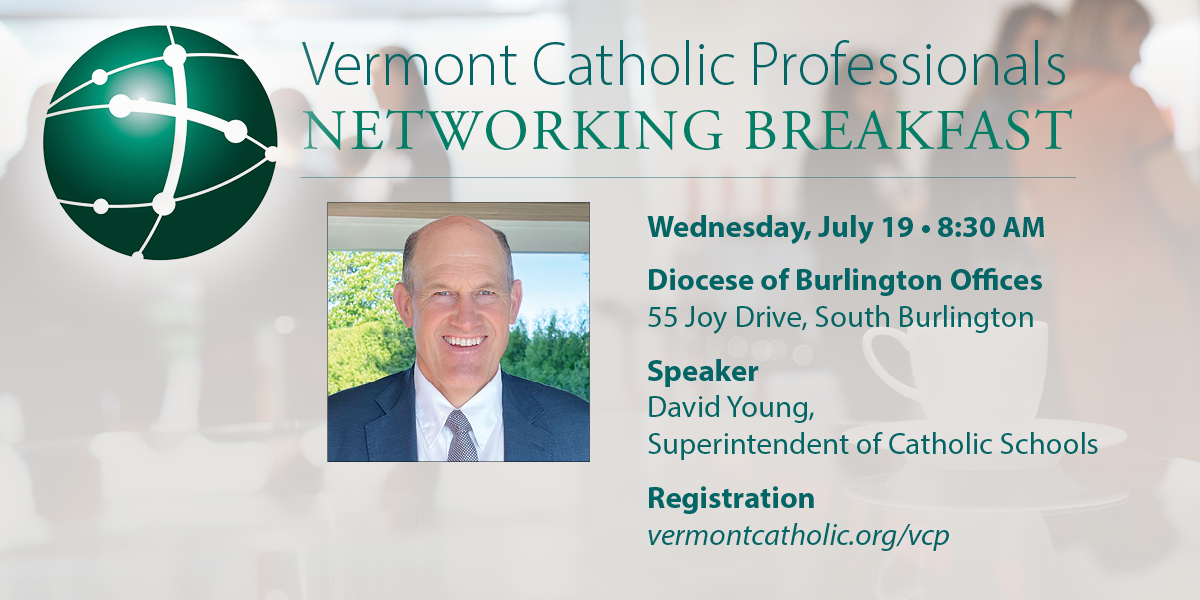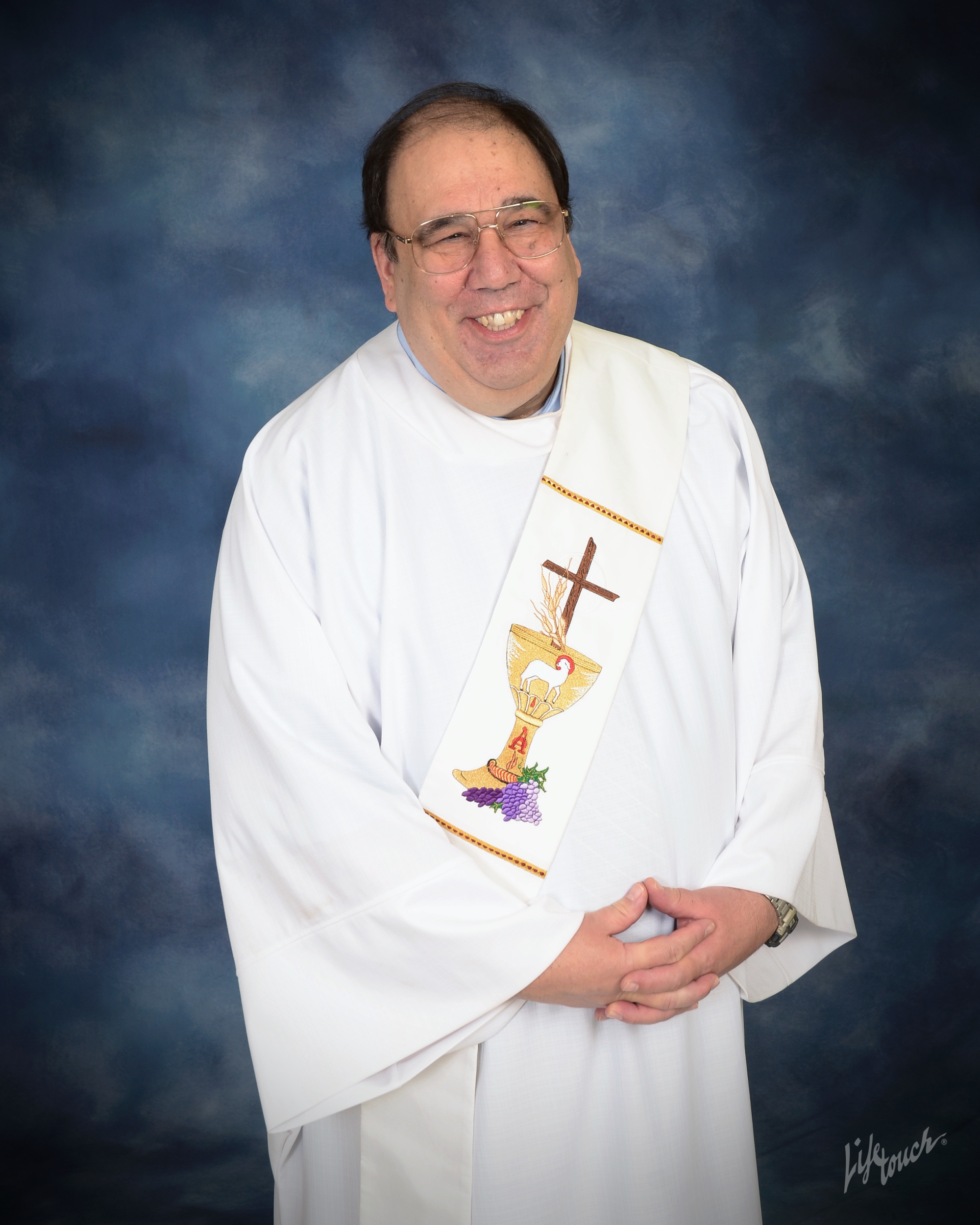
St. Alphonsus Liguori and Our Lady of Good Help, the two historic brick churches in Pittsford and Brandon, respectively, that makeup the Otter Valley Catholic Community, shine brighter these days thanks to the Christ Our Hope Campaign.
At St. Alphonsus, the shining is literally true through the restoration of the stained-glass windows in front of the church. They are as old as the church and were blunted by age. “From the inside, they are much clearer and sharper,” said Father Maurice Moreau, OFM Cap., pastor. “When the lights are on, they shine on passing traffic on Route 7.”
St. Alphonsus and Our Lady of Good Help ranked fourth and fifth in participation in the Christ Our Hope Campaign diocesan capital campaign.
Our Lady of Good Help tells a fuller story. Father Moreau led me through the ancestral strata of the parish with the skill of an archaeologist.
French Canadian Catholics built the first church in Brandon, called Bon Secour, in 1852, on the other side of the railroad tracks where the old cemetery is located.
The first part of the current Our Lady of Good Help Church was the sacristy, which was built in 1878. The parish added the rest of the building beginning in 1888.
Irish newcomers, whose labor fueled local industry, soon outnumbered the mostly rural French Canadians and added a new layer. “There’s more green in this church than one would expect,” Father Moreau said. “Just look at this green tile floor in the sanctuary.” He bent down and pointed to a small tile that he discovered cleaning during the Covid-19 shutdown with a date scratched in it. “Looks like 1939.”
Up until a couple of years ago, there was no image of Our Lady of Good Help at the church. “It took me a little bit to track it down,” he said; one now hangs in the vestibule between the front doors.
At the center of Our Lady of Good Help is a new back altar. It was moved from recently closed St. Agnes Church in Leicester, which was a mission of Our Lady of Good Help for much of its history.
The back altar was probably made in Fair Haven. It was taken apart after the Second Vatican Council and stored in the basement.
Long-time parishioner Jim Hayes oversaw the move and reconstruction.
“It was a complicated process,” said his daughter, Marci Hayes, who assisted in the project. “The pieces were heavy, and we had to figure out how to put them back together.”
Hayes utilized his professional skill as a general contractor, providing an engine lift and hydraulic lift to move the larger pieces. They built staging at Our Lady of Good Help to carefully lower the pieces in place.
For Marci Hayes it was the gift of her father’s faith that made it possible. “Dad was baptized at Our Lady of Good Help. He served as an altar boy, and he and Mom were married there. … And the altar wouldn’t have been possible without him.”
For Father Moreau, the altar represents a kind of continuity within the reality that parishes constantly shift and evolve.
“Sometimes incorporating something from another church is forced; a third statue of the Virgin Mary — where can we fit it in? In this case, St. Mary’s [Our Lady of Good Help] needed a back altar. It fit perfectly, and both the people of St. Agnes and St. Mary’s loved it.”
When asked about the connection with the Eucharist, Father Moreau replied, “Good liturgy and beautiful space connect people and feed them. We’re trying to get back to doing what we do well. The rest follows.”
— Damian Costello is the director of postgraduate studies at NAIITS: An Indigenous Learning Community, a speaker with the Vermont Humanities Council, and a member of St. Augustine Parish in Montpelier.
—Originally published in the Summer 2023 issue of Vermont Catholic magazine.




